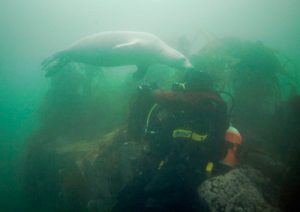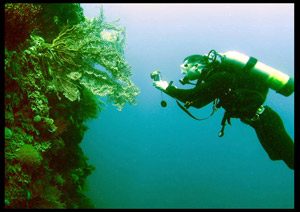PADI Peak Performance Buoyancy Specialty
Minimum age: 10yrs
Minimum qualification: PADI Junior Open Water Diver
 Do you guzzle your air like it’s going out of fashion?
Do you guzzle your air like it’s going out of fashion?- Do you always ask for a 15ltr tank when everyone else is happy with a 12ltr?
- Does everyone else dive for an hour yet you can only manage 40minutes max before you run out of air?
- Does this sound like you?
You are not alone trust me. It’s a fact that the overwhelming majority of divers wear far too much weight when they hit the water. Of those same divers, most of them say that they can’t get down unless they are wearing all that lead on their belt. If that’s true, then why do the dive guides in the Red Sea just wear a couple of Kilos? Why do the experienced divers in the club wear very little or indeed no weight at all when they hit the water? They don’t need it so what’s the secret?
Buoyancy control is all about being correctly weighted for the suit and equipment you are wearing. Using too little weight will mean that you either can’t submerge or else you won’t be able to hold your safety stop at the end of your dive when you are more buoyant.
If on the other hand you are over weighted, then submerging won’t be a problem but you’ll be using more air underwater because you will be working so much harder in order to compensate for all the tonnage you’re dragging around! Mmmm. Tricky.
It’s a balancing act if you’ll pardon the pun.
If some or indeed all of the above apply to you, then you really should seriously consider completing the PADI Peak Performance Buoyancy (PPB) Specialty Course.
 Buoyancy control is the mainstay of scuba diving. If you get this right then everything else seems to magically drop into place. Your air consumption drops and so does the amount of weight you have to wear. Suddenly you can hang around at 5m for as long as you like and every dive lasts an hour with air to spare. That’s what you want isn’t it?
Buoyancy control is the mainstay of scuba diving. If you get this right then everything else seems to magically drop into place. Your air consumption drops and so does the amount of weight you have to wear. Suddenly you can hang around at 5m for as long as you like and every dive lasts an hour with air to spare. That’s what you want isn’t it?
Buoyancy control is very much like learning to ride a bike. Before you can ride with one hand or indeed no hands, you have to learn to balance properly or you just fall off. Buoyancy in water is the aquatic version of balancing on a bike. And just like riding a bike, you have to practice before it becomes second nature. As your buoyancy improves, you become more confidant. Because you are more confident, you become more competent. This in turn leads to better air consumption which in turn boosts your confidence and so on. It becomes a cycle of improvement and your dives in turn become longer and longer. Simple isn’t it?
On the PADI Peak Performance Buoyancy Course we’ll show you proper weighting techniques and how to calculate the correct amount to use. You’ll also learn how to get below the surface and stay there without wearing a ton of lead in order to do so. We’ll have you hovering effortlessly and professionally at exactly the depth you want to be at. So, don’t just hang around, give us a call.
The course involves a self study portion and two dives (At the correct depth!!)
Any other options?
Of course there are. We always have options in life.
If time constraints are a problem, instead of coming along to us for your self study and classroom sessions, why not complete the PADI eLearning course at home or in the office? That way you can complete all your academic studies on line in your own time and then come to us for the open water dives.
You can find details and sign up for your PADI eLearning materials here.
(NB: the cost quoted on the PADI website is for the training materials only: call us to find out the cost of the diving element of the course)


 Do you guzzle your air like it’s going out of fashion?
Do you guzzle your air like it’s going out of fashion?